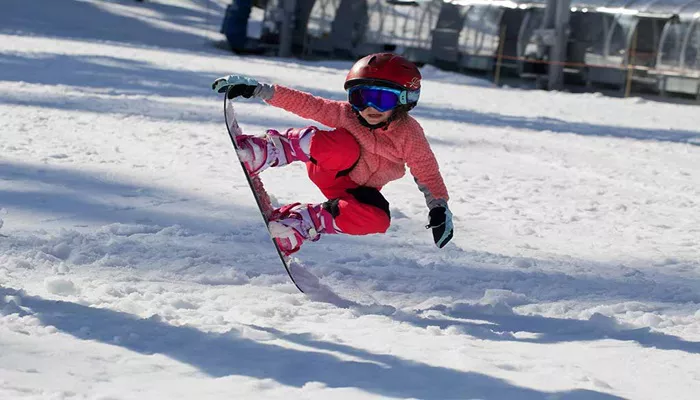Skiing is an exhilarating winter sport that many parents are eager to introduce to their children at an early age. However, one common question among parents is: when can kids start skiing? The answer depends on several factors, including the child’s physical development, motor skills, interest level, and the approach taken to teaching them. While some children are introduced to skiing as early as 2 years old, others may not be ready until they are 4 or 5. Regardless of the starting age, ensuring a positive and safe experience is crucial to fostering a lifelong love for the sport.
This article explores the ideal age for kids to start skiing, factors influencing readiness, best teaching practices, and essential tips for parents.
What Is The Best Age for Kids to Start Skiing?
Most ski schools and instructors recommend starting between the ages of 3 and 5. At this age, children generally have the necessary motor skills, balance, and coordination to begin learning basic skiing techniques. However, some children as young as 2 can also start if they show an interest and are physically capable.
1. Skiing at 2-3 Years Old: Is It Too Early?
Starting at 2 or 3 years old is possible but should be approached with caution:
Physical Readiness: At this stage, children are still developing balance and coordination. Short sessions (15-30 minutes) on flat terrain are ideal.
Equipment Fit: Finding appropriately sized gear for very young children can be challenging.
Emphasis on Fun: At this age, skiing should be playful and pressure-free, with no expectations of actual skiing techniques.
2. Skiing at 4-5 Years Old: The Ideal Starting Age
Most experts agree that ages 4-5 are the best time to start skiing:
Better Balance & Coordination: Children have improved muscle control and can grasp skiing fundamentals.
Increased Attention Span: They can follow instructions more effectively.
Greater Endurance: They can manage longer sessions without getting overly tired.
3. Skiing at 6 Years and Older: A Late Start?
For children who start skiing at 6 or older:
Faster Learning Curve: Older kids can often progress more quickly due to better strength and coordination.
More Independence: They can handle ski lifts and basic maneuvers sooner than younger beginners.
More Confidence: A later start can mean fewer fears or frustrations compared to younger learners.
Key Factors in Determining Readiness for Skiing
1. Physical Development
Strong enough to support themselves while wearing ski boots.
Good balance and coordination when running or jumping.
Ability to stay active in cold weather without discomfort.
2. Emotional Readiness
Displays curiosity or enthusiasm for skiing.
Comfortable being separated from parents for short periods (for ski lessons).
Able to follow basic instructions from an instructor.
3. Interest Level
If a child is excited about skiing, they are more likely to engage and learn faster.
Forcing a child to ski before they are ready can create resistance and fear.
How to Teach Kids to Ski Effectively
1. Start in a Controlled Environment
Choose beginner-friendly ski resorts with gentle slopes.
Practice on flat terrain before moving to small inclines.
Avoid crowded areas to reduce stress and distractions.
2. Enroll in Professional Ski Lessons
Certified instructors have the experience to teach young children effectively.
Group lessons offer a fun, social experience and can help children feel more at ease.
Private lessons provide personalized instruction and faster progress.
3. Use Proper Equipment
Ski Length: Shorter skis (chest height or shorter) are easier for kids to control.
Boots: Ensure a snug but comfortable fit to support ankle movement.
Helmet: Always required for safety.
Clothing: Dress in layers to keep kids warm and dry.
4. Make It Fun and Playful
Use games like “Follow the Leader” or “Red Light, Green Light” on skis.
Let them slide and fall in a relaxed way to eliminate fear.
Take breaks to prevent exhaustion and frustration.
Common Challenges and How to Overcome Them
1. Fear of Skiing or Falling
Start with small steps, like standing on skis without moving.
Use encouragement rather than pressure.
Demonstrate falls and show that getting up is easy.
2. Short Attention Span
Keep sessions short and engaging.
Offer snacks and warm-up breaks.
Rotate between skiing and fun activities like sledding.
3. Uncomfortable with Cold Weather
Ensure kids have waterproof gloves and thermal layers.
Use hand warmers if necessary.
Keep sessions brief in extreme conditions.
Parental Role in a Child’s Skiing Journey
Be Patient: Progress may be slow at first, but consistency is key.
Encourage Independence: Let kids try things on their own while offering support.
Focus on Enjoyment: The goal should be to foster a love for skiing rather than immediate technical mastery.
Lead by Example: If you ski and enjoy it, your child is more likely to develop a similar passion.
Conclusion
The ideal age for kids to start skiing depends on individual readiness rather than a fixed number. While 3-5 years old is generally the best time to begin, some children can start as early as 2, while others may be more comfortable waiting until 6 or older. Regardless of age, the key to success is making skiing an enjoyable and pressure-free experience. By focusing on proper preparation, safety, and fun, parents can ensure their child develops a lifelong appreciation for skiing. Whether your little one starts early or later, the joy of gliding down the slopes together will make the journey worthwhile.

